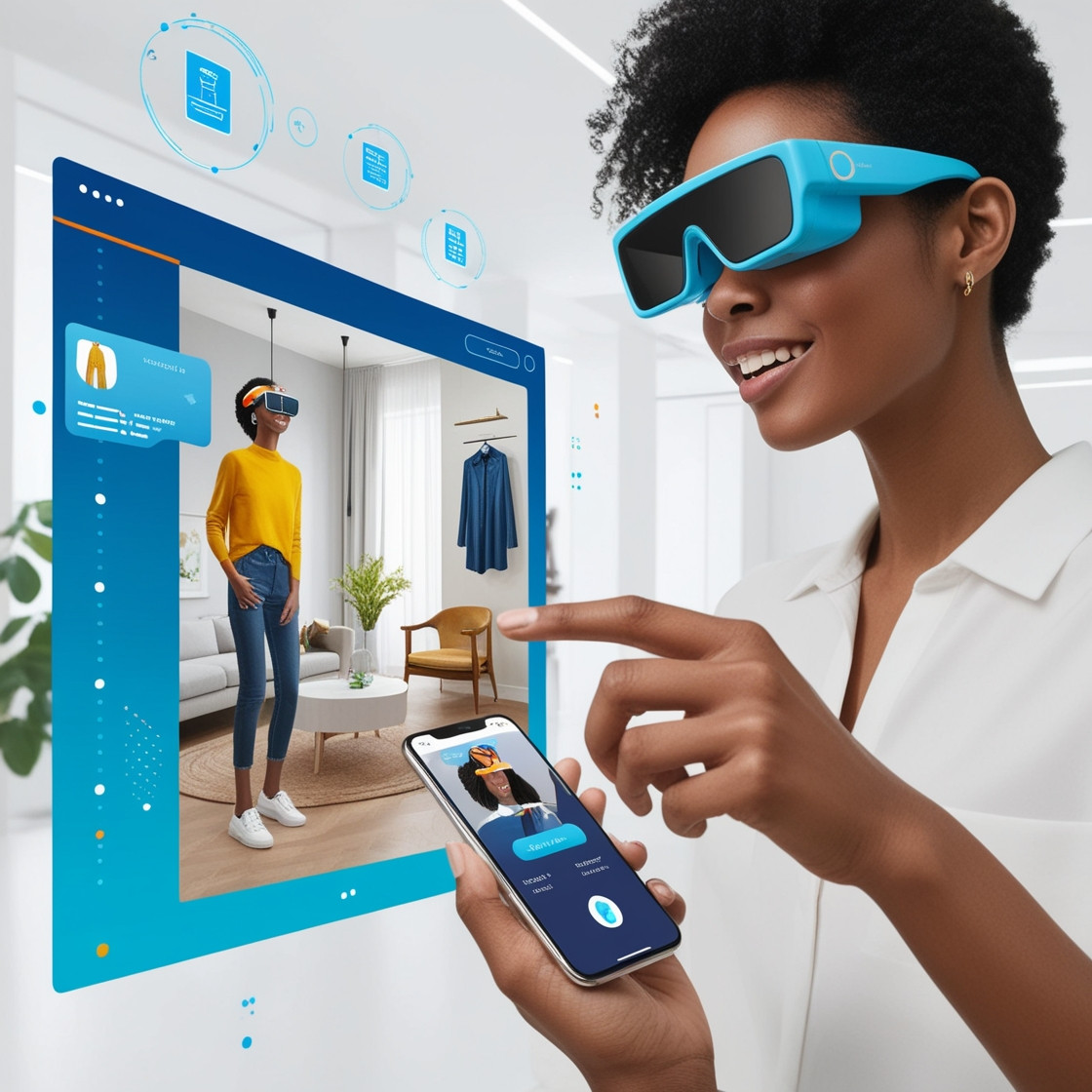In an age where digital shopping is becoming the norm, businesses are constantly seeking innovative ways to enhance the customer experience. Two of the most transformative technologies reshaping online shopping are Artificial Intelligence (AI) and Augmented Reality (AR). These technologies are not just buzzwords; they are powerful tools that are redefining how consumers interact with brands and products. In this blog, we will explore how AI and AR are revolutionizing digital shopping experiences, making them more engaging, personalized, and immersive.
The Rise of Digital Shopping
As eCommerce continues to grow, driven by advancements in technology and changing consumer behaviors, retailers are under pressure to provide compelling online experiences. According to recent data, online sales are expected to surpass $6.3 trillion globally by 2024, demonstrating the urgency for brands to innovate.
Year Global eCommerce Sales (in Trillions) 2020 4.28 2021 4.89 2022 5.2 2023 5.9 2024 6.3 (Projected)
The Role of AI in Enhancing Shopping Experiences
1. Personalization at Scale
AI enables retailers to analyze vast amounts of data, allowing them to tailor shopping experiences to individual preferences. By utilizing machine learning algorithms, brands can understand customer behavior, preferences, and purchase history to deliver personalized recommendations.
Example:
- Recommendation Engines: Platforms like Amazon and Netflix use AI to suggest products or content based on user behavior.
Feature Benefit Customer Segmentation Personalized offers and recommendations Dynamic Pricing Adapting prices based on demand and user data Behavior Analysis Anticipating future purchases
2. Virtual Shopping Assistants
AI-powered chatbots and virtual shopping assistants provide 24/7 support, guiding customers through their shopping journey. These tools can answer questions, provide product details, and assist with transactions, enhancing customer satisfaction.
Benefits of Virtual Assistants:
Functionality Benefits 24/7 Availability Customers can get help anytime Instant Responses Reducing wait times for customer inquiries Transaction Support Assisting customers in completing purchases
3. Predictive Analytics
Predictive analytics tools use AI to forecast consumer behavior and trends. By analyzing historical data, retailers can make informed decisions about inventory management, marketing strategies, and customer engagement efforts.
Predictive Analytics Use Cases Benefits Inventory Management Reducing overstock and stockouts Marketing Optimization Targeting campaigns more effectively Customer Retention Strategies Proactively engaging at-risk customers
The Impact of Augmented Reality on Shopping
1. Immersive Product Experiences
AR allows consumers to visualize products in their environment before making a purchase. By overlaying digital content onto the physical world, AR enhances the shopping experience and helps customers make informed decisions.
Examples of AR in Shopping:
Brand AR Feature Benefit IKEA IKEA Place App Visualizing furniture in home settings Sephora Virtual Artist Trying on makeup virtually Nike Nike Fit Measuring feet for accurate shoe sizing
2. Enhanced Customer Engagement
AR engages customers by creating interactive experiences. Brands can use AR for virtual try-ons, gamified shopping experiences, or unique storytelling, which captivates audiences and builds brand loyalty.
AR Engagement Strategies Benefits Virtual Try-Ons Reducing return rates through better fit Gamified Shopping Experiences Boosting customer interaction and enjoyment Storytelling through AR Creating memorable brand experiences
3. Bridging Online and Offline Shopping
AR can help bridge the gap between online and offline shopping by enhancing in-store experiences. For example, customers can use AR apps to receive additional product information or interactive content while in-store, leading to more informed purchasing decisions.
AR Bridging Strategies Benefits Interactive Store Displays Engaging customers with additional content Product Information Overlays Providing instant access to details Location-Based Offers Tailoring promotions based on customer location
Challenges and Considerations
While AI and AR offer exciting possibilities for enhancing digital shopping experiences, businesses must also consider some challenges:
Data Privacy Concerns
As AI collects and analyzes vast amounts of data, consumer privacy is a significant concern. Brands must prioritize data protection and transparency to build trust.
Technology Accessibility
Not all consumers have access to advanced AR technology or high-speed internet, which can limit the reach of AR applications.
Integration with Existing Systems
Integrating AI and AR into existing eCommerce platforms can be complex and may require substantial investment in technology and training.
The Future of Shopping
The integration of AI and AR into digital shopping experiences is still in its infancy, but the potential is vast. As technology continues to evolve, we can expect:
1. More Advanced AI Algorithms
Future AI developments will likely lead to even more personalized shopping experiences, with algorithms that better predict consumer preferences and behaviors.
2. Enhanced AR Capabilities
As AR technology improves, we may see more sophisticated applications that provide even richer and more interactive experiences for consumers.
3. Seamless Omni-Channel Integration
The future will likely see a more seamless integration between online and offline shopping experiences, with AI and AR tools bridging the gap and providing a consistent brand experience across channels.
Conclusion
AI and AR are at the forefront of transforming digital shopping experiences. By leveraging these technologies, brands can enhance personalization, engagement, and customer satisfaction while driving sales and loyalty. As we move forward, the successful integration of AI and AR will be essential for retailers looking to thrive in an increasingly competitive eCommerce landscape.
The future of shopping is not just about buying products; it's about creating memorable experiences that resonate with consumers, and the combination of AI and AR is unlocking that potential like never before.



0 Comment